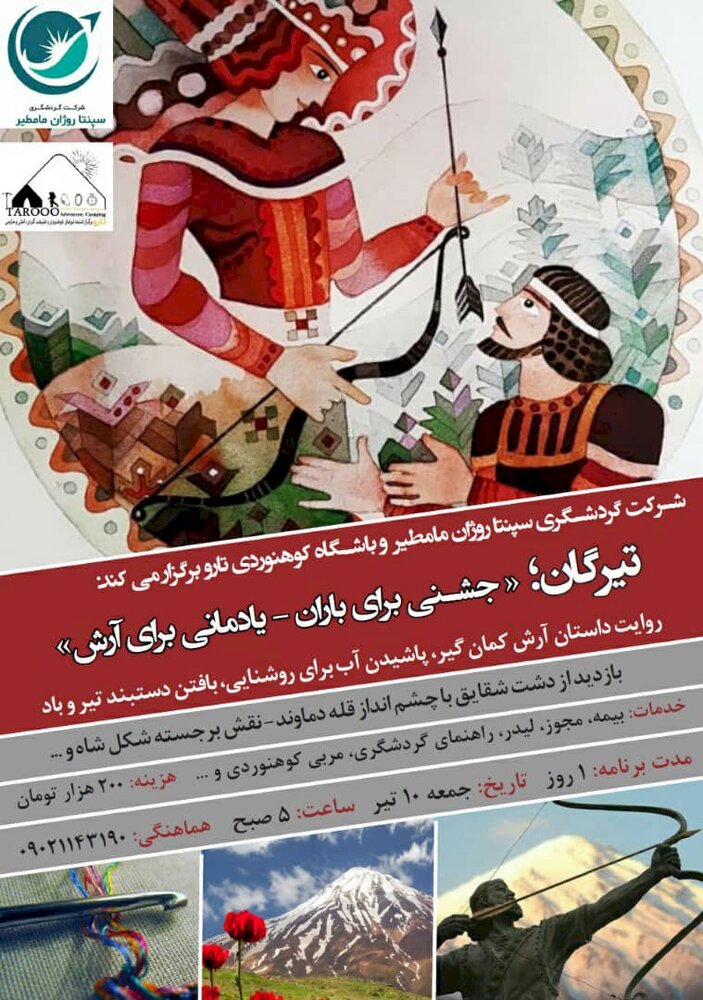Mazandaran preparing to mark Tirgan festival

TEHRAN – Mazandaran province is getting prepared to celebrate the ancient festivity of Tirgan on Friday, the deputy provincial tourism chief has said.
“As an ancient ritual and national heritage, the Tirgan festival can be turned into a tourism product, as well as creating vitality in the region and providing the ideal environment for attracting tourists,” CHTN quoted Mohammad Arman Ershadi as saying on Sunday.
The one-day festival will be held in collaboration with the private sector, the official added.
Tirgan is a time-honored Iranian festival usually observed as a rain festival. Tiragan, along with Noruz, Yalda Night and Mehregan are amongst feasts widely celebrated in the ancient land.
Currently, the summer festival is mainly celebrated by Iranian Zoroastrians. The celebration is widely attested by historians such as Abu Saeid Gardezi, Biruni, and Al-Masudi, as well as European travelers to Iran during the Safavid era.
The Tirgan festivity refers to the archangel, ‘Tir’ (meaning arrow) or ‘Tishtar’ (lightening), referring to thunderstorms that bring much-needed rain that boost harvest and avert drought.
The ancient legend of the Tir (arrow) refers to “Arash of the swift arrow” or ‘Arash the archer’ (Arash-e Kamangir).
According to the Zoroastrian calendar, every thirty days of the month carries a name. The thirteenth day of the month of Tir on the Persian calendar (June 22 - July 22) is named after the respective month, Tir.
Legend has it that Arash was the best archer in the Persian army. He was selected to settle a land dispute between Persia and Turan (present-day Central Asia).
When the kings of the two lands - Manouchehr and Afrasiyab - decided to settle their dispute and set a permanent boundary between Persia and Turan, they arrived at a mutual understanding that Arash should climb to the tall Mount Damavand’s peak, and from there shoot an arrow toward the east. Wherever his arrow landed, they agreed, would determine the boundary between the two kingdoms.
Arash shot his arrow (Tir) on the 13th day of the Persian month of Tir, which fell on the banks of the Jeyhun (the Oxus) River. Thus, the borders of the two countries were marked.
Legend has it that as soon as the border dispute was settled, rain began pouring down on both lands, which had been suffering from an eight-year drought.
Thus this day, the 13th of Tir (July 4th) is celebrated as the Festival of Rain.
It is customary for Zoroastrians to tie rainbow-colored ribbons around their wrists for ten consecutive days and toss the ribbons into a stream on the day of the festival.
The Festival of Rain is celebrated by people dancing, singing, reciting poetry, and serving delicacies such as spinach soup and ‘sholeh zard’ (saffron-flavored rice pudding).
An early civilization flourished at the beginning of the first millennium BC in Mazandaran (Tabarestan).
Its insecure eastern and southeastern borders were crossed by Mongol invaders in the 13th and 14th centuries. Cossacks attacked the region in 1668 but were repulsed. It was ceded to the Russian Empire by a treaty in 1723, but the Russians were never secure in their occupation. The area was restored to Iran under the Qajar dynasty.
The northern section of the region consists of lowland alongside the Caspian and upland along the northern slopes of the Alborz Mountains. Marshy backlands dominate the coastal plain, and extensive gravel fans fringe the mountains. The climate is permanently subtropical and humid, with very hot summers.
ABU/AFM
